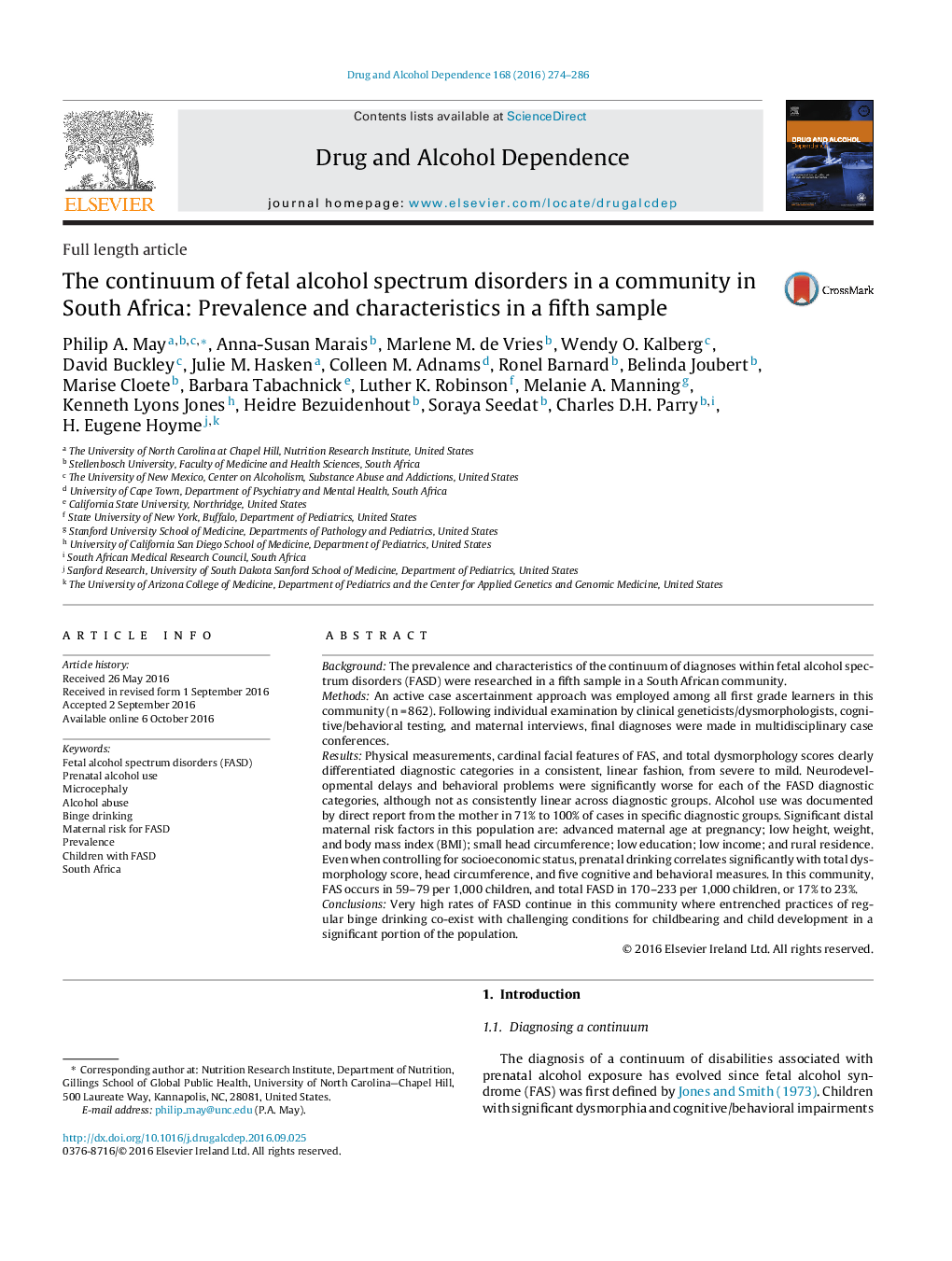| Article ID | Journal | Published Year | Pages | File Type |
|---|---|---|---|---|
| 5120473 | Drug and Alcohol Dependence | 2016 | 13 Pages |
â¢High rates of fetal alcohol spectrum disorders were again found in this community.â¢Fetal alcohol syndrome prevalence is 59-79 per 1,000 children.â¢Total FASD prevalence is 17%-23%.â¢Prenatal alcohol use correlated with poor physical and behavioral outcomes.â¢Distal maternal risks include: high parity, low BMI, SES, and head circumference.
BackgroundThe prevalence and characteristics of the continuum of diagnoses within fetal alcohol spectrum disorders (FASD) were researched in a fifth sample in a South African community.MethodsAn active case ascertainment approach was employed among all first grade learners in this community (n = 862). Following individual examination by clinical geneticists/dysmorphologists, cognitive/behavioral testing, and maternal interviews, final diagnoses were made in multidisciplinary case conferences.ResultsPhysical measurements, cardinal facial features of FAS, and total dysmorphology scores clearly differentiated diagnostic categories in a consistent, linear fashion, from severe to mild. Neurodevelopmental delays and behavioral problems were significantly worse for each of the FASD diagnostic categories, although not as consistently linear across diagnostic groups. Alcohol use was documented by direct report from the mother in 71% to 100% of cases in specific diagnostic groups. Significant distal maternal risk factors in this population are: advanced maternal age at pregnancy; low height, weight, and body mass index (BMI); small head circumference; low education; low income; and rural residence. Even when controlling for socioeconomic status, prenatal drinking correlates significantly with total dysmorphology score, head circumference, and five cognitive and behavioral measures. In this community, FAS occurs in 59-79 per 1,000 children, and total FASD in 170-233 per 1,000 children, or 17% to 23%.ConclusionsVery high rates of FASD continue in this community where entrenched practices of regular binge drinking co-exist with challenging conditions for childbearing and child development in a significant portion of the population.
